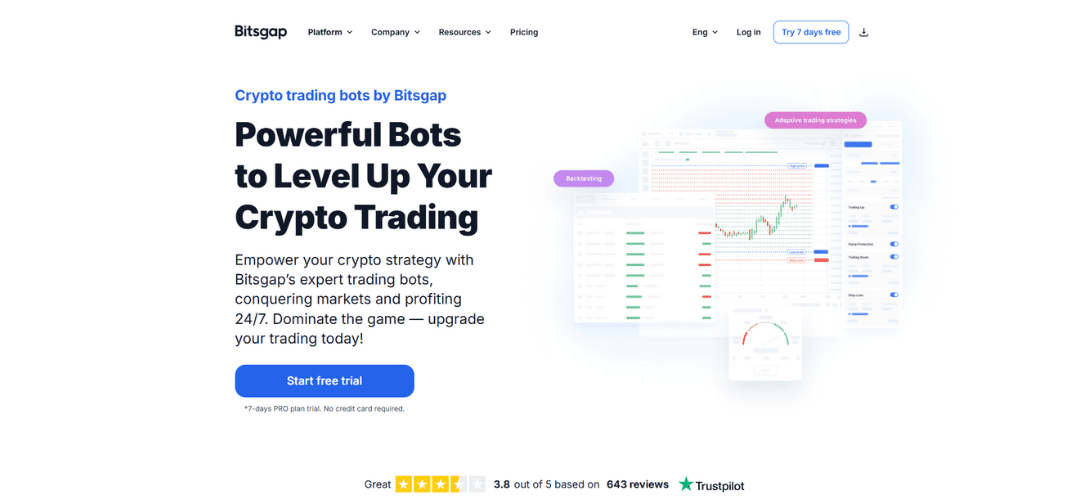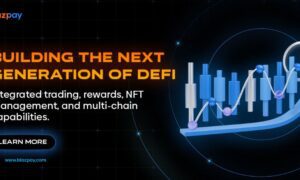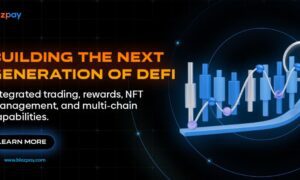Introduction: Unified Platform or Local Tools?
Automation is now a core part of crypto trading. Traders want tools that reduce manual steps, remove emotional mistakes, and deliver faster, consistent execution. Today, two main systems exist: multi-exchange automation and local tools built directly into a single exchange. While both automate trading, they offer very different levels of flexibility.
Bitsgap operates as an independent automated trading platform, running bots across multiple exchanges. For traders comparing options or searching for the right crypto trading bot, this distinction becomes crucial: an external multi-exchange system works very differently from a simple built-in module. In contrast, built-in tools on Binance, Bybit, and KuCoin work only inside one platform. As markets move quickly, the ability to adjust, react, or switch strategies across exchanges becomes increasingly valuable.
This article compares how both systems work, how they differ in control and analytics, and which approach supports different trading styles.
How the Systems Operate
Bitsgap: Multi-Exchange Automation
Bitsgap connects to several exchanges via API keys and lets traders manage all strategies from a single dashboard. The platform includes:
• GRID bots for sideways markets
• DCA bots for trends
• COMBO bots for automated futures trading
• Smart Orders with advanced conditions
All strategies run inside one interface, enabling multi-market execution without switching platforms. The system is designed for scalability – traders can add bots or new exchanges without rebuilding existing setups.
Built-in Exchange Bots: Local and Simple
A built-in exchange bot, such as a binance trading bot, Bybit tool, or KuCoin module, operates only within its own platform and relies on its internal logic. These bots typically provide:
• Basic grid modules
• Simple strategy templates
• Limited risk-control tools
• Minimal analytics and reporting
They work well for beginners who want quick automation, but they lack cross-exchange management, unified reporting, and advanced customization. Each exchange requires separate configuration and separate monitoring as every bot runs independently.
Key Difference
Bitsgap delivers multi-exchange automation with a broader set of tools. Built-in bots offer simple one-exchange automation. As traders expand their portfolios or work across several markets, the gap between both systems becomes more impactful.
Control & Strategy Management
Bitsgap: Centralized Management
Bitsgap lets traders manage multiple GRID, DCA, COMBO, and Smart Order strategies across exchanges from one dashboard. Bots can be launched, paused, or adjusted instantly, and all activity is tracked in a single interface. The centralized structure makes large-scale trading easier and more consistent.
Built-in Bots: Isolated and Limited
Local bots on Binance, Bybit, or KuCoin provide basic automation but limited customization and minimal analytics. They cannot coordinate strategies between exchanges, and performance must be reviewed manually on each platform.
Key Difference
Bitsgap centralizes strategy control, while built-in bots remain isolated inside a single exchange with limited features.
Functionality, Costs & Integration
Bitsgap: Advanced Tools & Cross-Exchange Integration
With a paid subscription, Bitsgap provides:
• Multi-exchange analytics
• Unified portfolio tracking
• Real-time performance comparison
• Flexible bot customization
• Advanced order systems
• Full API support for major exchanges, including bybit exchange
These capabilities make Bitsgap suitable for traders who want more insight, greater control, and broader automation.
Built-in Bots: Free but Basic
Built-in systems are usually free but limited to essential features:
• Basic GRID or DCA logic
• Minimal reporting
• No combined statistics
• Separate setup for each exchange
For simple tasks on a single platform, these tools work fine. But for multi-market trading, the lack of integration becomes a disadvantage, as performance must be compared manually – slowing down decision-making.
Cost Summary
• Bitsgap: Paid, but offers advanced automation and unified analytics.
• Built-in bots: Free but basic, and tied to one platform.
The best option depends on portfolio size and trading goals.
Final Verdict: Centralized Efficiency Wins
| Criterion | Bitsgap Bots | Built-in Exchange Bots |
| Functionality | Advanced, multi-exchange | Basic, single-exchange |
| Control | Centralized | Limited |
| Scalability | High | Low |
| Convenience | One dashboard | Separate setups |
| Analytics | Deep & unified | Minimal |
| Best For | Multi-market traders | Simple local automation |
Conclusion
Bitsgap provides more flexibility, transparency, and control for traders operating across multiple markets. Its unified system supports complex strategies, portfolio-wide risk management, and long-term performance tracking.
Built-in bots from Binance, Bybit, and KuCoin remain useful for simple tasks and single-exchange trading. But they lack the scalability required for advanced or multi-exchange automation.
If your goal is efficient cross-exchange automation, Bitsgap offers a stronger solution. If you only need basic automation on one exchange, built-in tools are sufficient. Before choosing, it’s helpful to compare platforms and read kucoin reviews to find the best approach for your goals as you explore new trading bot solutions.



































